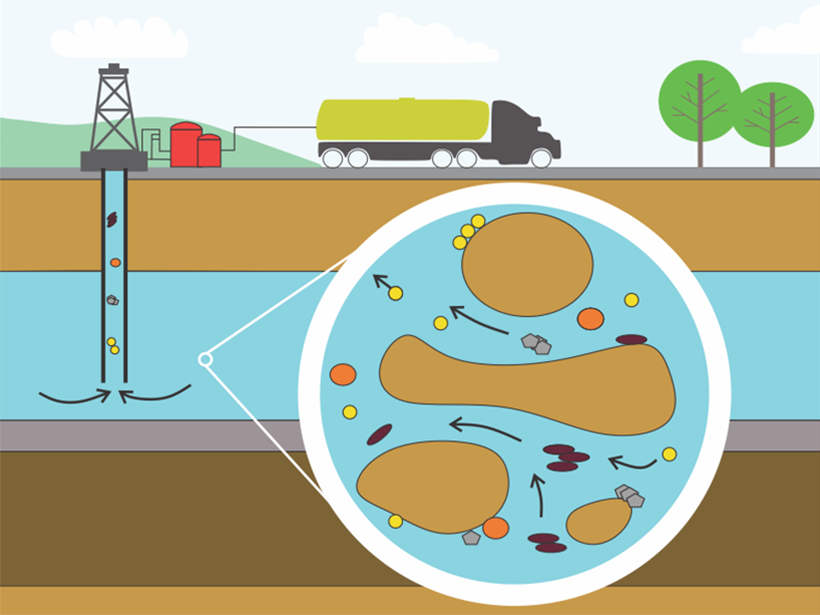Source: Water Resources Research
In nature, the mobilization of tiny particles—such as mineral fragments or microbes—from rock surfaces or other porous materials to which they’re adhered has important environmental and engineering implications, both negative and positive. Mobilized and dispersed in groundwater, the particles, or colloids, can assist in the transport of contaminants such as radionuclides and metals, the transfer of viruses and bacteria, or the removal of pollutants from contaminated sites. So accurate predictions of potential colloid mobilization in the environment, achieved through modeling, are vitally important.
Previous models describing the fate and transport of colloidal particles have consistently assumed that in saturated media, colloids detach as individual, uniformly sized particles—an assumption that contradicts substantial evidence that particles tend to cluster together. In a new study, Chequer et al. take a more realistic approach to colloidal modeling that for the first time, accounts for this evidence.
The team performed laboratory and modeling experiments that examined the mobilization of both single and clumped particles of latex and clay deposited onto two media: sand grains and glass beads. By varying the flow velocity, pH, and ionic strength of the mobilizing water, the researchers observed the specific conditions under which the colloid particles detached. The results indicated that in the lab experiments, mobilization of particle clusters occurred at critical water velocities much higher than those predicted by standard theory for the detachment of single colloids.
The authors concluded that because of stronger attractive van der Waals forces acting between the sand grains or glass beads and clustered colloidal particles (compared with single particles), the clusters’ mobilization is not accurately predicted with standard calculations, which consider only single particles. The researchers contend that the ease with which colloids are mobilized ultimately depends on two factors: the size of single particles and how favorable conditions were for the initial deposition of clusters. These factors collectively control whether colloidal particles deposit onto a surface individually or in aggregate, as well as the strength of the attachment.
Because all current models of colloid detachment use single-particle calculations, the new study represents an important first step toward creating more realistic models of colloid mobilization in porous media. As such, this research has the potential to substantially improve the accuracy of future studies of contaminant fate and transport, as well as cleanups of environmentally compromised sites. (Water Resources Research, https://doi.org/10.1029/2018WR024504, 2019)
—Terri Cook, Freelance Writer
Citation:
Cook, T. (2019), Treating colloids as clusters better predicts their behavior, Eos, 100, https://doi.org/10.1029/2019EO129395. Published on 25 July 2019.
Text © 2019. The authors. CC BY-NC-ND 3.0
Except where otherwise noted, images are subject to copyright. Any reuse without express permission from the copyright owner is prohibited.

